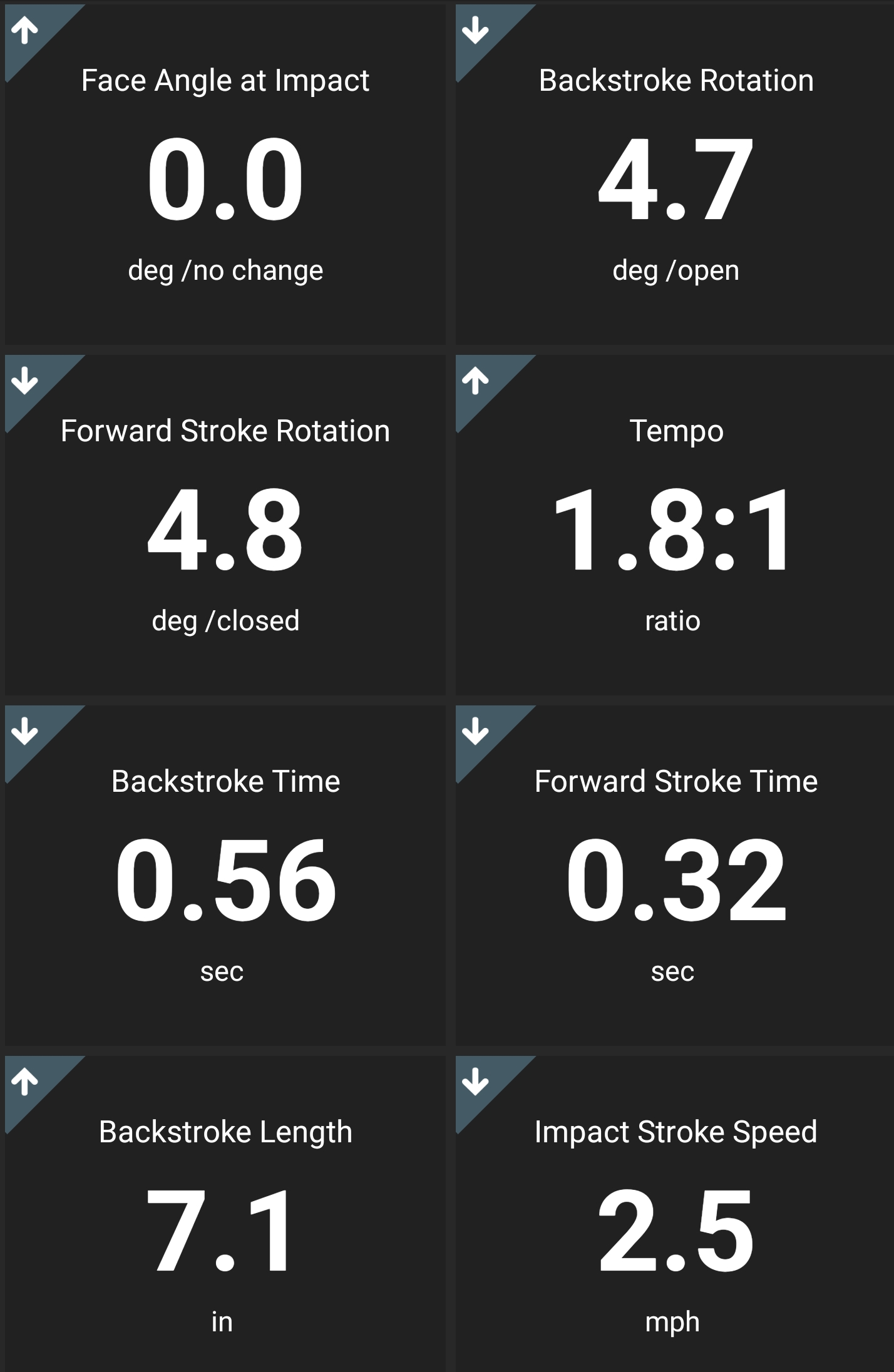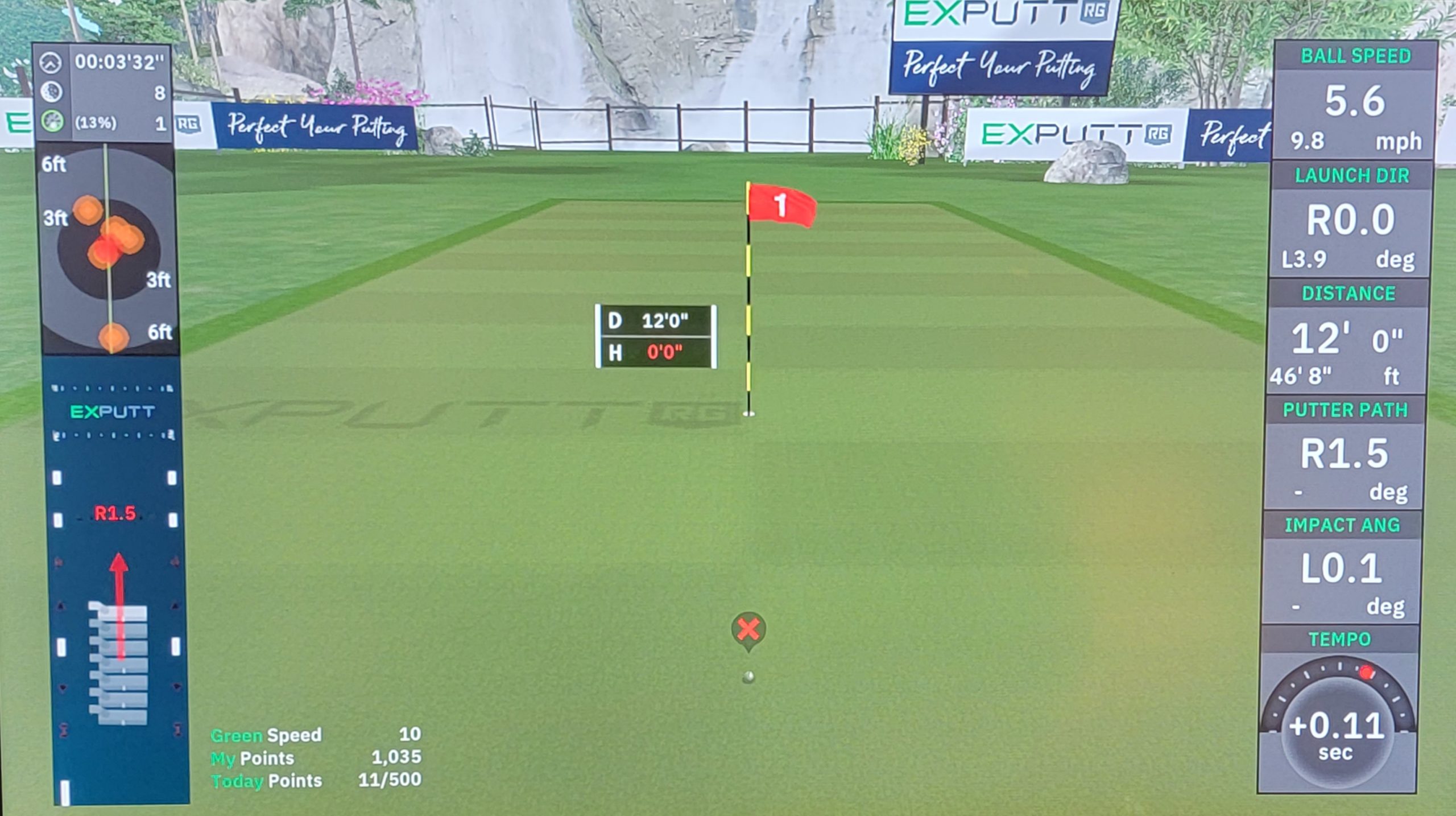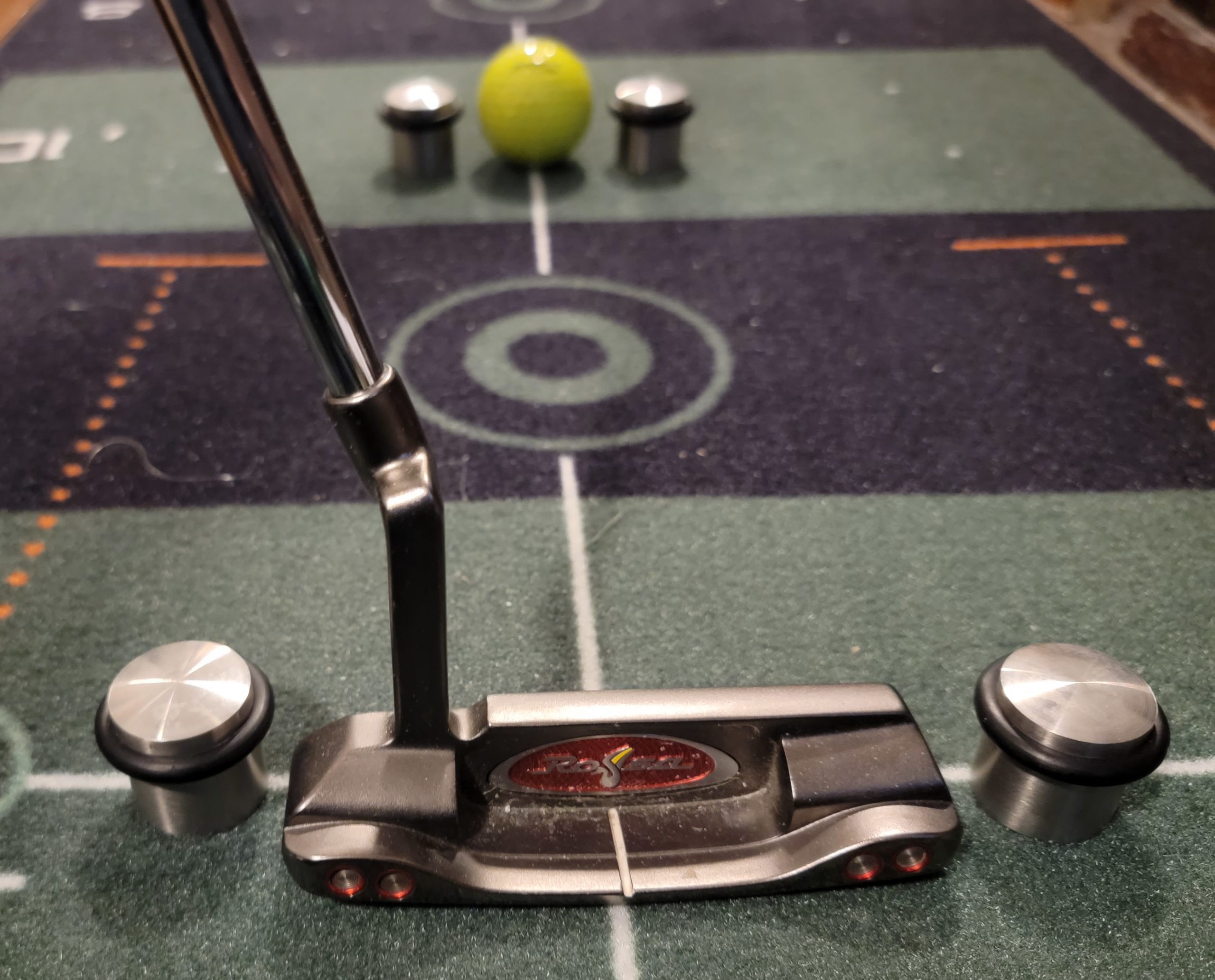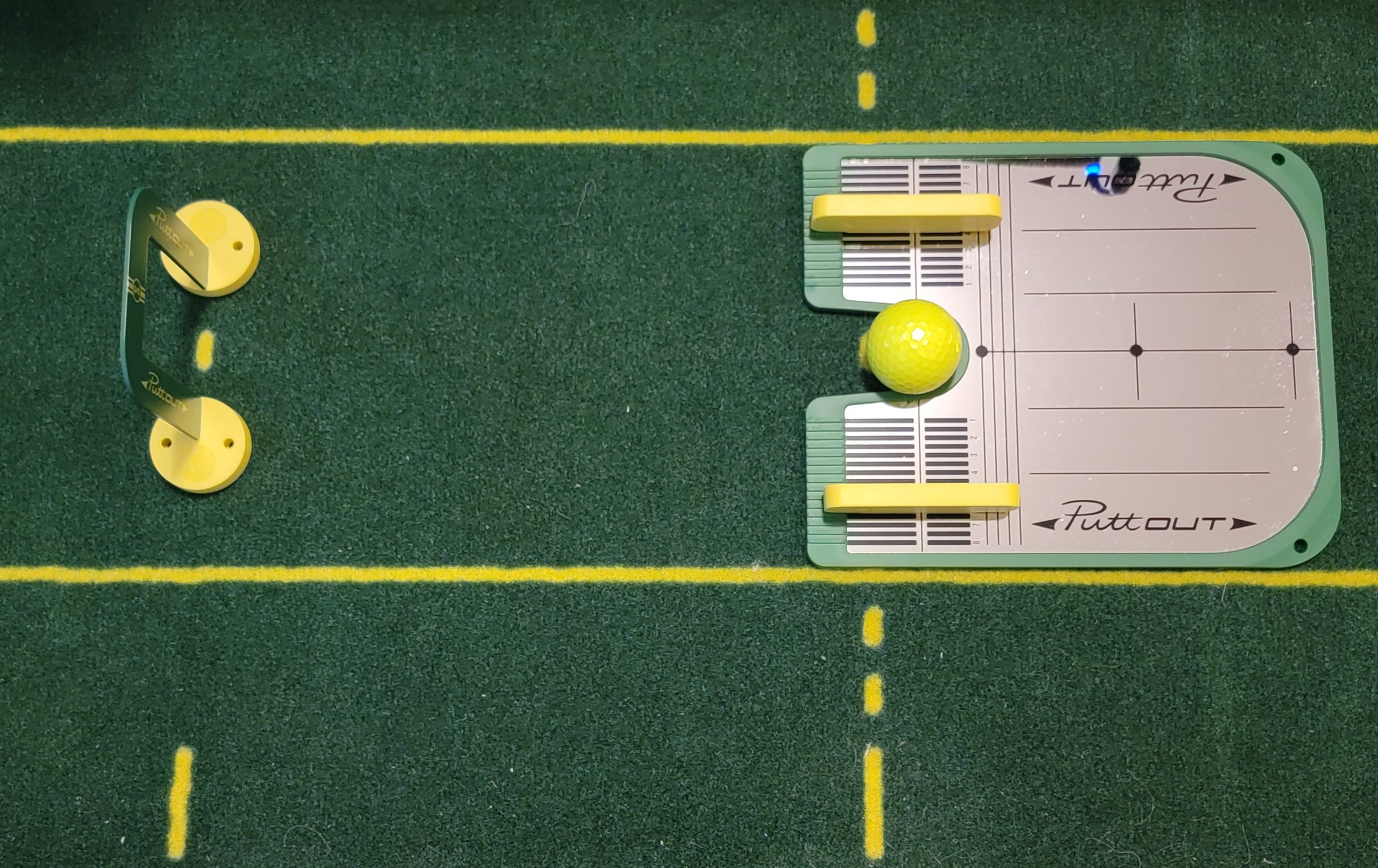Putter path is really the trajectory the putter takes on the way to a square strike at impact. Let’s take a look at some drills and ways to measure path with indoor putting drills.
Indoor Putting Drills Series
Aim
Speed
Face Angle at Impact
Path ← You are here
Green Reading
Drills Overview
We are talking about finding the sweet spot on the putter face consistently, having a square putter face at impact, and starting the ball on your intended start line at the proper speed.
Just as an example: If I measure my backstroke to be 5 degrees open, then my forward stroke must be 5 degrees closed. That is if my intent is to measure a 0.0 degree square club face at impact.
Simply put, you must return the club face to where it started at setup for perfect impact.
Examples. Your backstroke is 5 degrees open and your forward stroke is 3 degrees closed. You just left the putter face 2 degrees open and the ball is going to go right. The object is 0.0 at impact. 5-3 = +2 degrees
Your backstroke is 5 degrees open and your forward stroke is 7 degrees closed. Your just closed the putter face by 2 degrees more than it started at so the ball is going left. The object is 0.0 at impact. 5-7 = -2 degrees.
I measure this with a couple apps.
Just a note. Not everyone has the same putter path.
Straight Back and Straight Through
There is no such thing as straight back and straight through.
In order to achieve that you would need a putter shaft that was 90 degrees perpendicular to the putter head.
That is illegal according the rules of golf.
Because the lie angle of the putter is a significant angle (70 degrees), you would need to manipulate a swing to make the putter go straight back and straight through.
It would be pretty much impossible to repeat if you could do it at all.
Everyone has a putting arc. The path opens on the way back and it closes on the way through.
Calculating your putting arc
I’m not going to geek out on putting arc, but I can provide a couple links to details on how to determine what your putting arc is from Visio Golf.
Open template calculator This is a heck of a lot easier to use, but you need to know your arc at 30 mm or 11.8 inches into your backstroke. I used Blast Motion Golf and a tape measure to approximate my backstroke arc at that length.
To measure the way I did and estimate your putting arc, choose Rotation Matrix from the calculator.
How to choose your correct putting template (PDF) This is harder than the calculator above.
Here is an example of my arc: At 11.8 inches into my backstroke, my putter is 7 degrees open. That translates into needing a Class 5 arc template from Visio or a 24 degree arc template from Wellstroke.
Note: When I say open or closed, I mean my shoulders rotate slightly when I putt. My putter face is square to the arc. I do not rotate my hands. My lower body and and hands are still.
Indoor Putting Drills: Path
This is really the only training aid I have that measures the exact backstroke and forward stroke rotation.
Then it gives you face angle at impact as a result.
While it does not indicate path, being open or closed at impact does mean right or left.
The image below is for a 10 foot putt. Note: the backstroke and forward stroke don’t match exactly, but it must have been close enough for the device to read 0.0 face angle at impact.
The backstroke length was 7.1 inches and I made the putt on an 11 stimp surface.

Indoor Putting Drills: Path
The Wellstroke mat is made by Wellputt. The drill is putting and using the mat as a path template.

These are very flexible mats with stroke indicators printed on them. Flexible is key so they lay flat indoors or outdoors.
Personally, I don’t use this outdoors. I have a PuttOUT mirror with putter gates and ball gates that I use outside.
Indoor Putting Drills: Path
This is my newest and likely one of the top two training aids I own.

In the image above, I made the putt.
I have a tendency to try and hook my putts. That is most likely the cause for my path to be to the right.
However, the launch angle was zero.
Why do I tend to hook putts? My miss is right and / or short. Sometimes my brain takes over and says hook it a little.
Starting on the bottom right:
- Tempo was +0.11 seconds from 75 beats per minute on the built in metronome
- Face angle at impact was left or closed 0.1 degrees.
- Putter path was 1.5 degrees right
- Distance was 12 feet
- Launch angle was 0.0 degrees
- Ball speed was 5.6 mph
On the left side:
- The stimp reading for the green was 10
- Note: the graphic indicating putter path right 1.5 degrees
- There is also a putt dispersion chart on the top left
Indoor Putting Drills: Path


This by itself is not a path trainer. Together with the Wellstroke mat and Wellputt Indoor Weighted Tees it can be.
Set the indoor tees as a Putter Gate and Ball gate.
If you hit the putter gate, your path is off. It doesn’t indicate why or how much.
Indoor Putting Drills: Path
PuttOUT Putting Mat – Academy Studio

This by itself is not a path trainer. Together with the PuttOUT mirror, putter gate and ball gates it can be.
If you hit the putter gate, your path is off. It doesn’t indicate why or how much.
Indoor Putting Drills Series
Aim
Speed
Face Angle at Impact
Path ← You are here
Green Reading
